Text
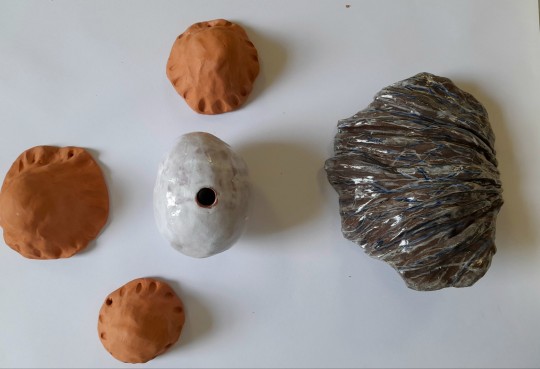
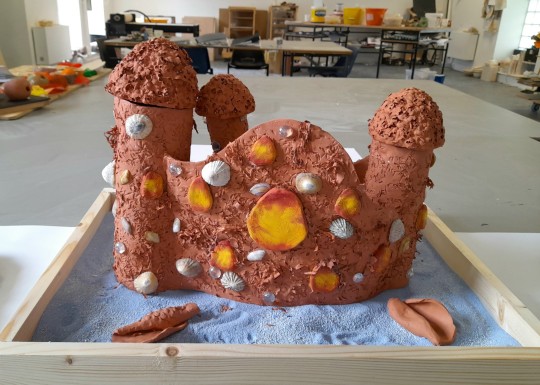

This project began with just shells. Their texture, form, colour, layers, surroundings, and meaning excited me, and I wanted to work with them. For the narrative of the senses project, I linked them with my favourite fairytale, "the little mermaid," by Hans Christian Andersen. I wanted to make the world he describes so beautifully come alive, so I created the mermaid's castle and her lily wreath. The broken pearl protected by the shells symbolizes her sacrifice and her suffering, making her character come alive, too. For my pieces, I worked with a variety of processes and materials, including shells, wire, beads, fishing line, seaweed, and several grains. By exploring these materials and the processes they bring with them, I learned a lot in this short time, and if I had more time, I would have gladly continued this project.
8 notes
·
View notes
Text
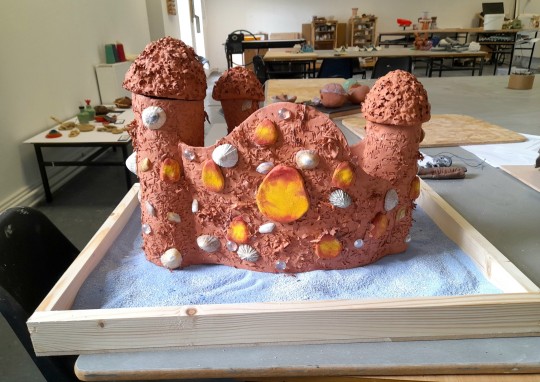

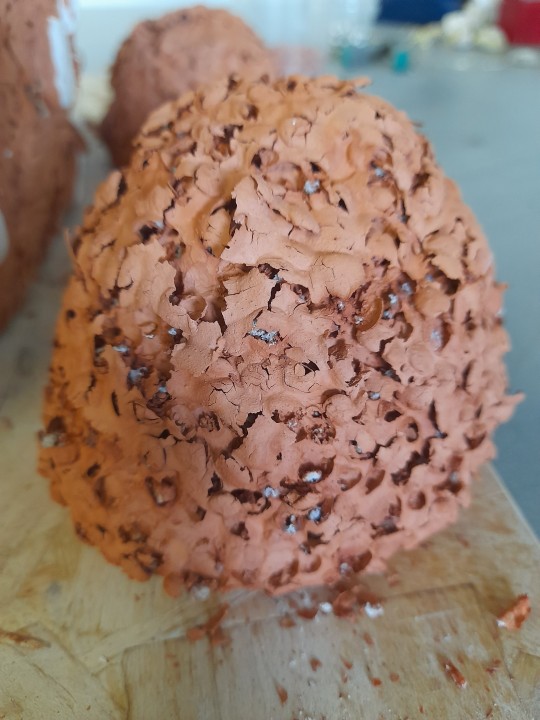

As expected, a lot of the slip cast seaweed crumbled down, and the areas that were joined when the clay was dry split a little. However, it didn't fall apart completely, which is a relief.
I noticed the orange slip dyed areas it wasn't supposed to, so I glued the crumbled seaweed over those areas, mainly around the windows. To make the windows appear more like Amber, I coloured them with gouache paint. To enhance the castle walls, I attached shells and transparent beads.
The turrets came out different as expected as the slip cracked and revealed the pouches left by the peas that burnt away. There even is a white residue of either the peas or the lentils, which I really like as it reminds me of the description in the fairytale. It says the roof is made of shells that open and close in the current, revealing shining pearls.
I'm not satisfied with the walls, though, because the rice only left a shallow mark, and a lot of the seaweed crumbled down and is still crumbling with every movement. I should have pressed the rice deeper into the clay and found an alternative to the seaweed, although I wouldn't know what. From the test slabs that I fired I know that barley covered in slip would have looked good, too, so if I was to do it again I would mix rice and barley for the texture of the wall.




3 notes
·
View notes
Text
The towers are made exactly like the walls, with the only difference being they are wrapped around a cylinder and scored and slipped on one side. Two towers are connected to the walls while the third one just stands in the castle. Joining the walls and towers was a challenge as the clay had already dried a lot, and it wasn't easy to access the parts that were to be joined. That's why I'm not sure how firm they are attached to one another and whether the connection will withstand the heat of the kiln. I'm also not sure how much of the slip casted seaweed will be left as it dried and crumbled at some points and probably wasn't properly covered in slip at other points. So I'm prepared for it to look very different and even to see a ruin when I open the kiln. If it did collapse, I will work with that and compose an installation with it still.
The reason this castle doesn't have a roof could be because it's under the sea and the water is everywhere anyway, so it doesn't make sense to have a roof. Or, in case it broke in the kiln because it is an old castle whose roof collapsed a long time ago.

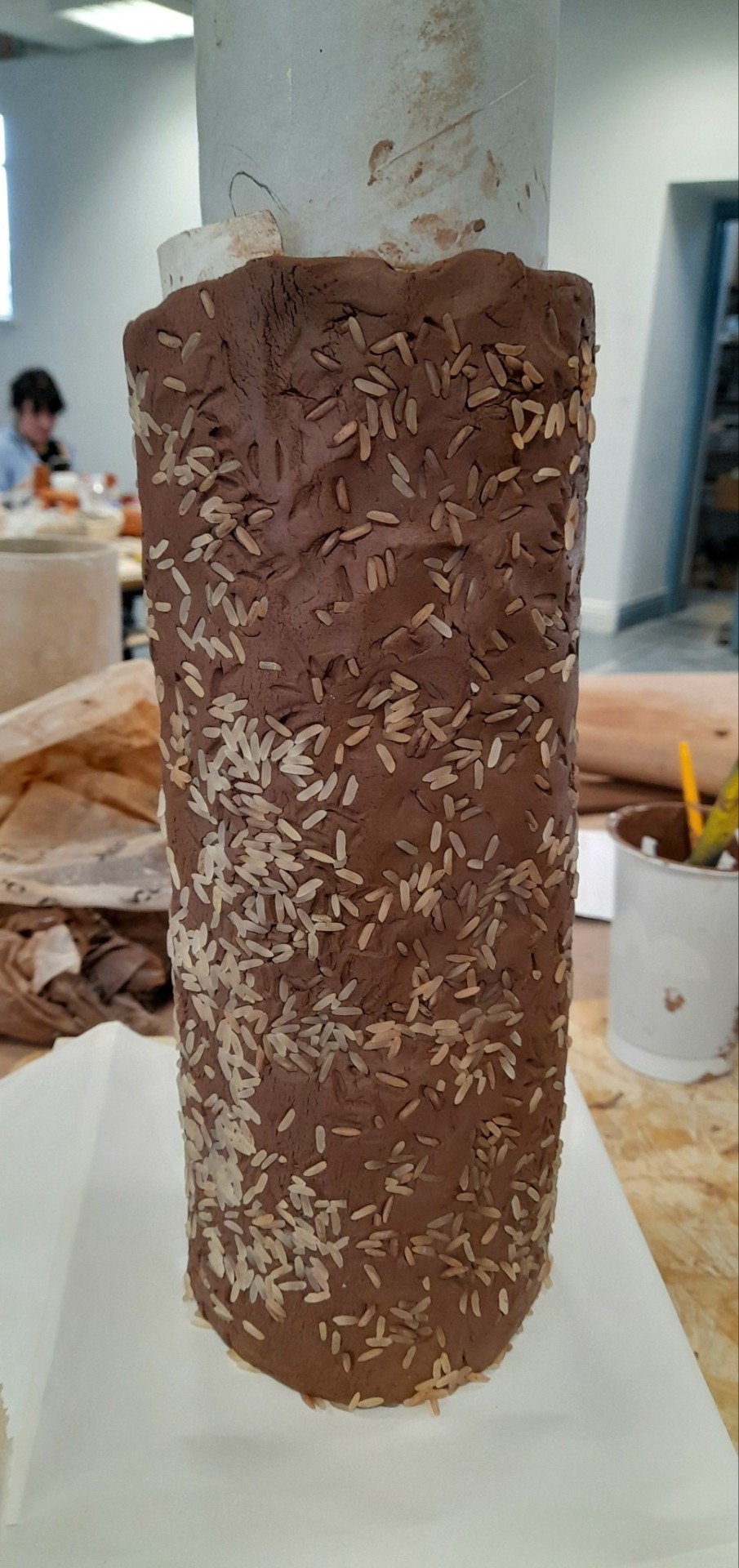


The reason this castle doesn't have a roof could be because it's under the sea and the water is everywhere anyway, so it doesn't make sense to have a roof. Or, in case it broke in the kiln because it is an old castle whose roof collapsed a long time ago.
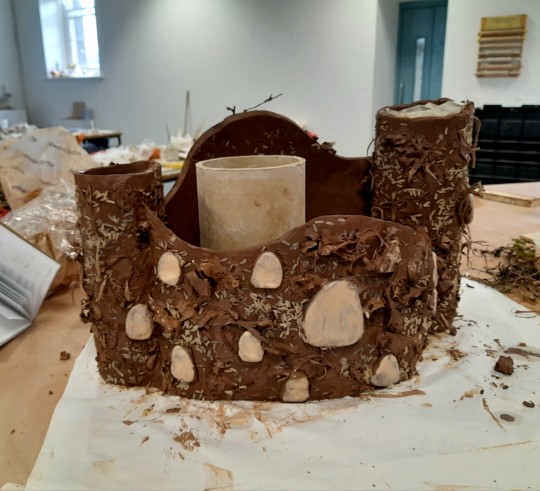

1 note
·
View note
Text



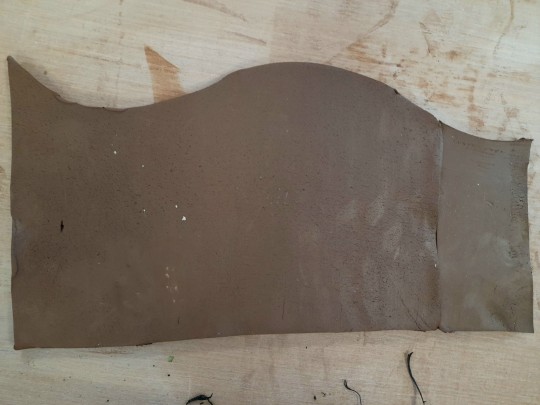


After I decided on the materials to use for my castle, I created templates for the walls out of paper and looked for cylinders I could wrap the towers around. Then, I began cutting the clay slabs in shape, spreading the rice and applying the seaweed, and fern dipped in slip. I chose to work with the terracotta clay as it will be red once it's fired, which will resemble the typical image of orange corals. As the windows are described to be out of amber, I painted them with orange slip. I intend to paint over the slip, though, because it is a peachy orange, and I need to imitate the effect of Amber.

1 note
·
View note
Text
In order to make the mermaid's castle look like it was made of corals, I had to consider which materials to use. I thought of rice, barley, peas, and lentils to burn away in the kiln and leave craters on the surface of the clay. As corals are long and thin, I decided to go with the rice for the corals and use the other materials for imitating shells in the turrets of the castle, which I formed out of pinched bowls.



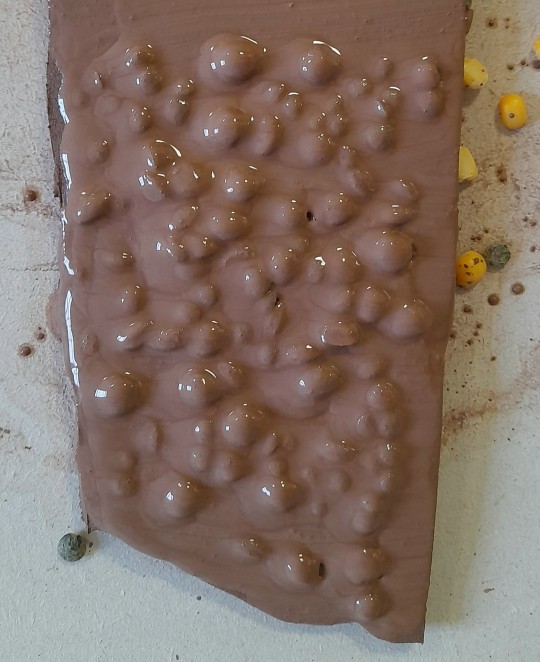
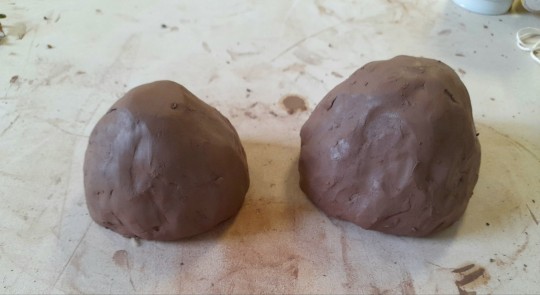
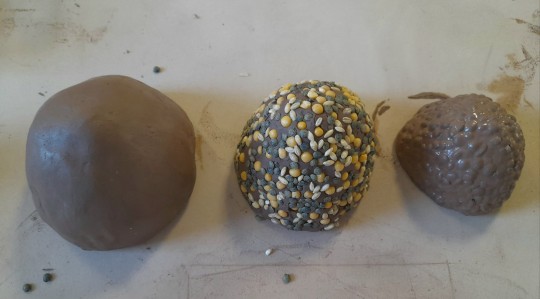
Only the rice as corals didn't seem sufficient, though. I decided to slip cast a material and put it on top. Seaweed, fern, Hessian fabric, cotton fibre, and thread were my options, and I chose seaweed as corals and fern as seaweed at the bottom of the castle.
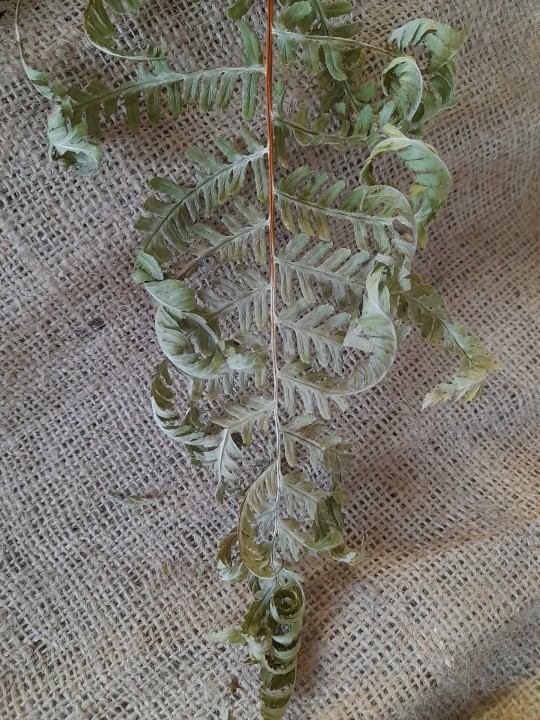

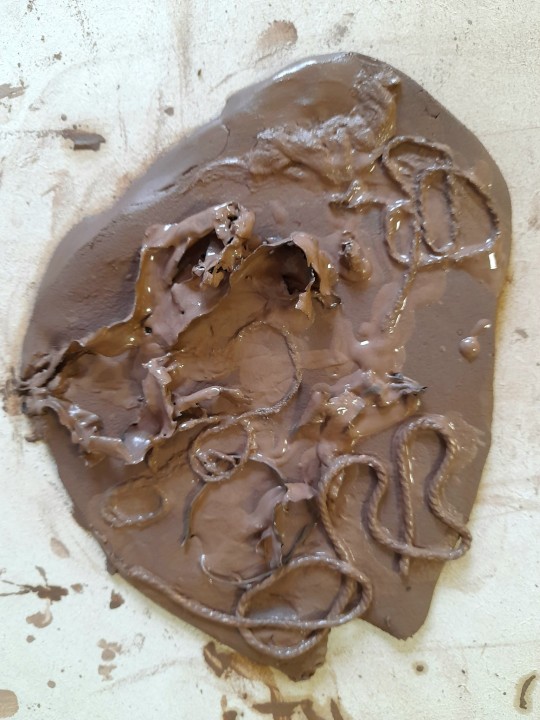

0 notes
Text



While researching potential materials for the castle, I found Mette Maya Gregersen's waves. She uses bamboo window blinds for her pieces. She forms them into wave like shapes and hangs them from the ceiling. Then she applies stoneware clay with additions, for example, molochite, paper pulp, acrylic fibres, bentonite, and sand. Some textures in the waves remind me of corals. However, I don't know which ingredients caused this particular pattern, and her process takes several weeks as she applies a lot of layers and lets each one dry before applying the next. That's why I ruled her process out for creating my catsle.
1 note
·
View note
Text
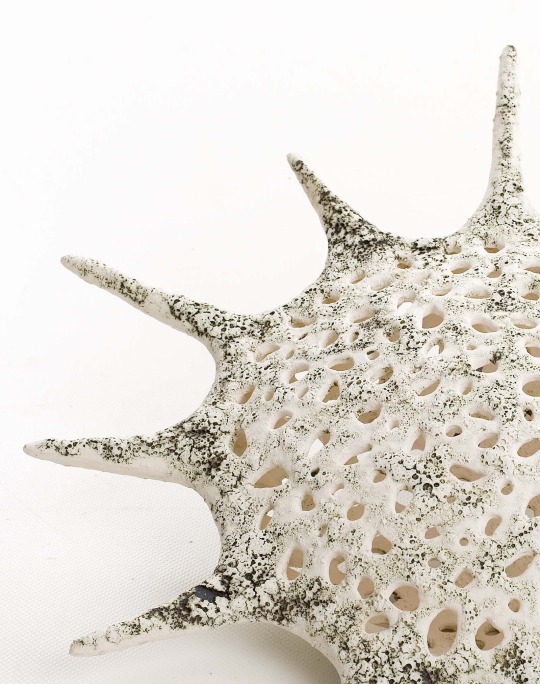

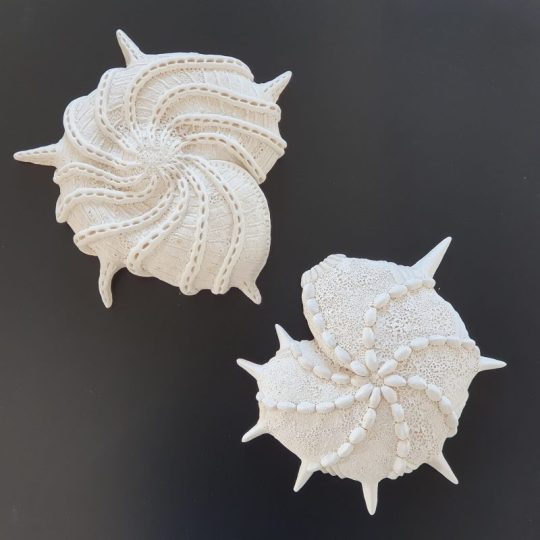
Jane Jermyn makes organic forms resembling shapes of nature, for example, shells, flowers, and leaves. She imitates the colour, texture, and form of the natural objects. To me, her shells are especially interesting because I'm working with shells, too. Her pieces remind me of fossils, and I found out they are inspired by the zoologist Ernst Haeckel's drawings and watercolours. I find his work interesting, too, and I might incorporate the shapes of the plants in "Actiniae" into my castle.



3 notes
·
View notes
Text

In the beginning, I considered natural sponges dipped in slip as a material for the coral walls of the castle as I was inspired by Zsiri Dempsey's sponge sculptures. However, after seeing it after bisque fire, I wasn't convinced of the result. It doesn't resemble corals a lot, most of it fell apart, and I wouldn't know how to arrange it on the walls. I won't be using this material for the castle.
1 note
·
View note
Text

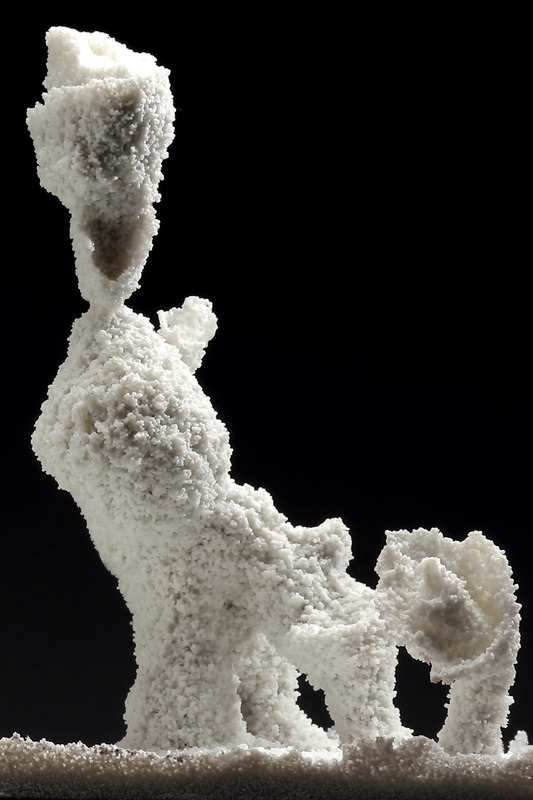
Zsiri Dempsey's sponge figures remind me of corals. The little mermaids castle is made of corals, which is why I considered sponges as materials for this piece. But as they release toxic fumes when they burn, I can not use them. However, I could use natural sponges or add another material to the clay that, when it burns away, will leave a texture that reminds of corals. Materials that could be used are rice, lentils, peas, or barley, but I would have to test them and their effect first, which I may not have time for.
0 notes
Text

The little mermaid is a bronze statue by Edvard Eriksen and located in Copenhagen. It depicts the mermaid transforming into a human. I wanted to imitate the sculpture in a photo and let the model wear my lily wreath and oysters as this is what the little mermaid wore when she first swam to the surface. Technically, the mermaid seeing the human world for the first time and her transformation into a human happen in different parts of the story, but as the statue is so iconic, I wanted to use it anyway. However, there is no time to make the oysters or the photo.

1 note
·
View note
Text



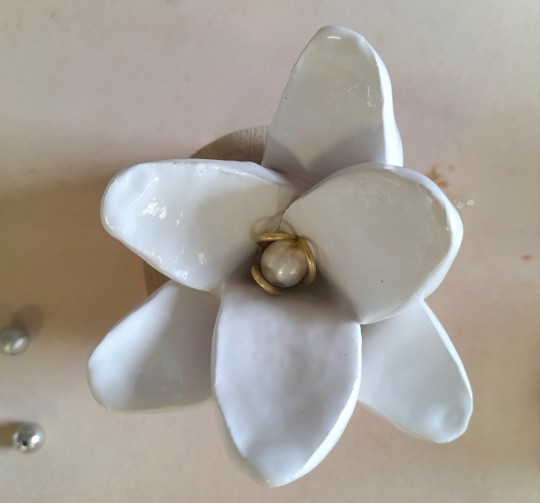
After the bisque firing, I glazed the lilies white and the leaves turquoise because I wanted them to remind of seaweed. Next, I had to decide which bead to put into the middle of each flower. The transparent bead was too big, and I couldn't decide whether to take the grey or the white bead, so I chose to use both. Originally, I wanted to imitate the lily's anthers with small pieces of golden wire, but it would have been difficult to attach them and the wire that would hold the lilies in the wreath. Instead, I used twisted golden wire to form three loops that would represent the anthers and used the end of the long wire to attach the flower to the wreath. The leaves, beads, and shells are attached with the help of a hot glue gun. Although I'm very happy with the result, it is very fragile and I'm not sure whether it's wearable which would have been important if I had the time to take a photo of them being worn.


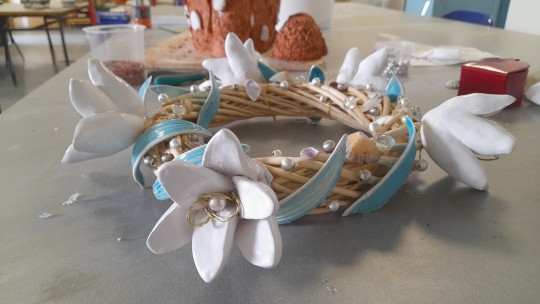
3 notes
·
View notes
Text



Andrea Kavanagh creates beautiful porcelain shells with interesting textures. For the small shells, she only applied glaze on the inside, making them shine only there, which makes them resemble real shells even more. I also like the irregularities that she covered with gold. I might apply that to the pearl lilies I'm working on.
6 notes
·
View notes
Text
In the fairytale, the little mermaid, the protagonist, gets a wreath of lilies on the day she visits the human realm for the first time. The text says every petal of the lilies is actually half of a pearl. That inspired me to make a wreath of lilies myself. First, I made round, lily inspired petals that I then cut in half and arranged in 5 flowers. The plan is to stick them to a polystyrene circle to make the wreath. For them to hold in the wreath, I attached clay skewers to the lilies, but they fell off, and I changed the idea to piercing holes through them to attach wire later. Next, I made lily leaves by pressing them onto a texture carved into plaster and finessed the edges. Once they are bisque fired, I might glaze the blossoms white and the leaves green, but I might not have time to do so.

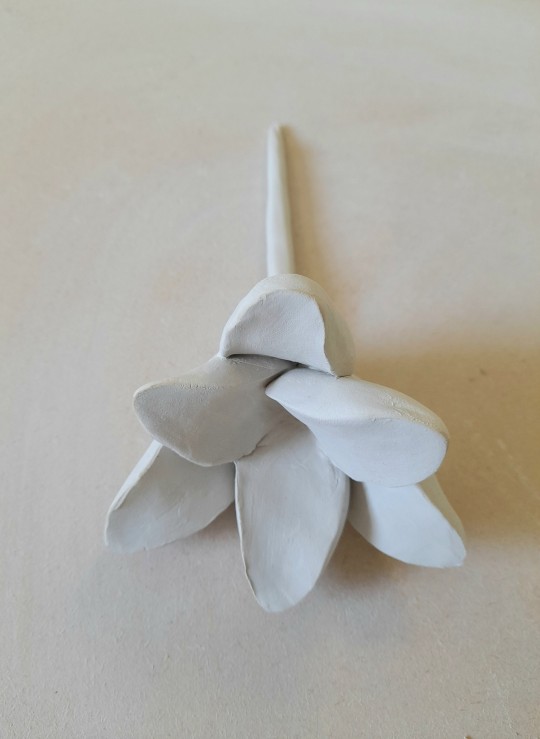


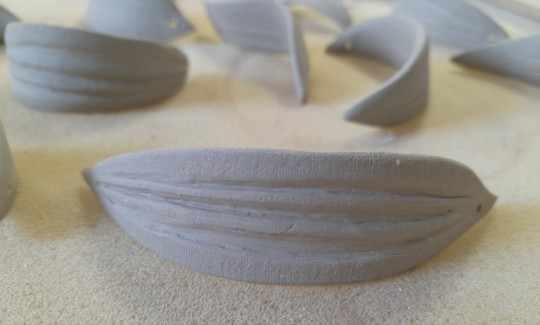
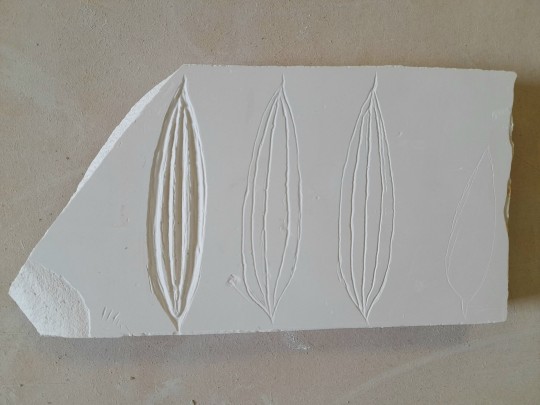
2 notes
·
View notes
Text
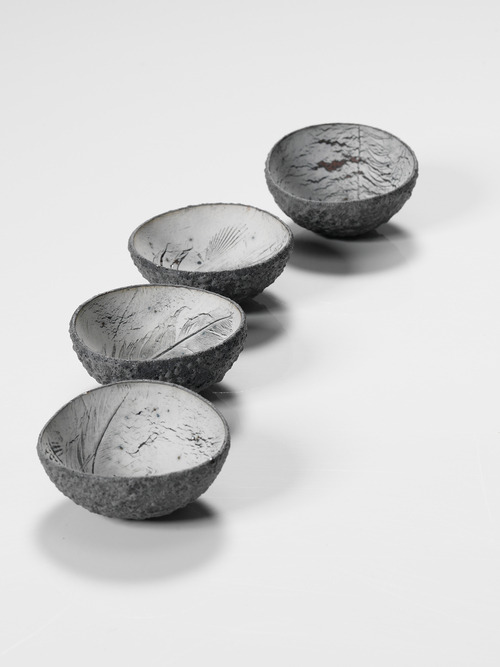

Annie Turner is inspired by the river and its surroundings. She looks at how the landscape around the river changes with the seasons and the tides. The outside of her Meander bowls are meant to resemble the mud and the textures on the inside come from things she found along the water. Although she isn't working with the ocean but a river, her approach is still interesting to me because I want to capture a landscape related to water, too. I wanted to create a pattern of locations that tells a story just like the willow pattern, the difference being it's the fairytale of the little mermaid and the pattern not being painted but carved into the clay. For this project, I wanted to use the same method as Annie Turner: applying a white slip on a slab, adding the texture, firing, applying a dark slip to highlight the textures and firing again. Unfortunately, I won't have time to do it.

Also interesting are her mussel bowls as they resemble oysters, and I was thinking of making oyster shells as well.
5 notes
·
View notes
Text
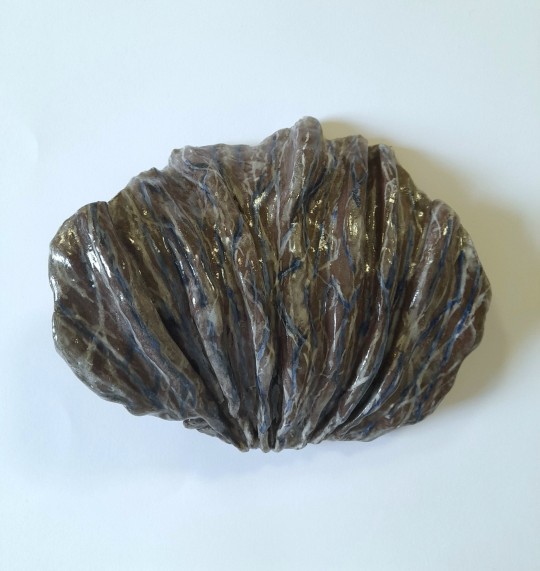

I had forgotten that the terracotta clay turns brown when it's fired at a high temperature, so I was surprised and disappointed when I found the shell wasn't red anymore. I should have applied a varnish to make it shiny instead of glazing it with transparent glaze. As there was an error in the kiln, it didn't quite get the temperature, leaving white stains on the shell where the glaze didn't melt. But I had painted white underglaze on it anyway, so it didn't bother me, and I decided not to fire it again.
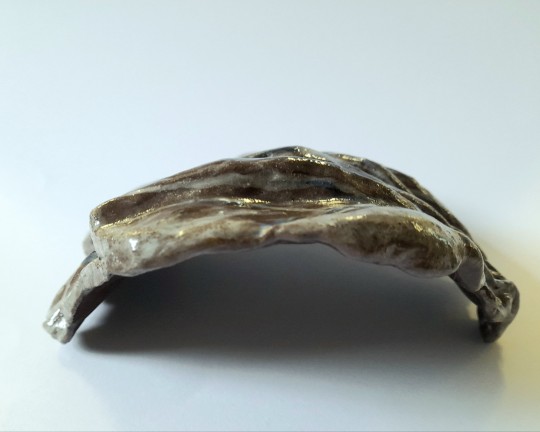
The form of the shell from the side reminds me of a wave.
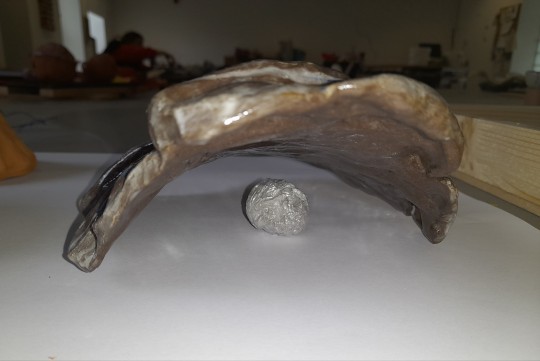
The pearl is made of cling film and painted with silver acrylic paint and white shimmering nail varnish to make it resemble a real pearl. It is still obvious that it is made of plastic, though, which is good as the piece is meant to remind of the pollution in the oceans.
0 notes
Text
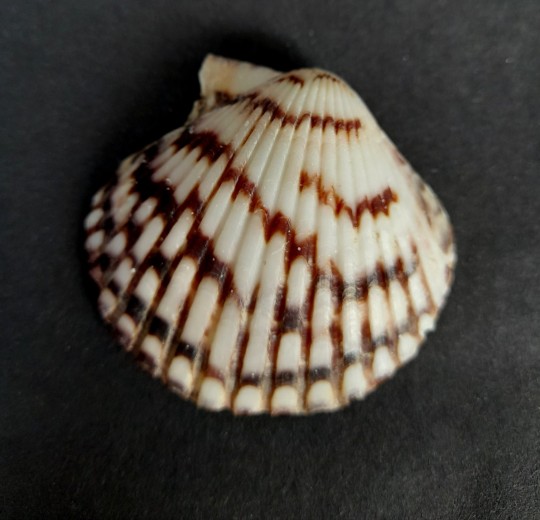




As the model for this shell has lines, I also wanted to put lines on my shell. However, I wasn't trying to imitate the dark horizontal lines but the very thin, wavy vertical lines that are only visible when you get very close. The model shell suggests using red and white, which I did too, but I also wanted to create a contrast with the red and found blue would be interesting. It also makes a link to the ocean again.
I chose to work with underglaze paint because it provided the opportunity to apply a colour but maintain the red at the same time. However, I'm not sure how it will come out after bisque firing, which is why I'm considering putting glaze on it depending on the result.
2 notes
·
View notes
Text


This shell was originally meant for the giant necklace, but as I didn't finish it in time, I repurposed it. I'm going to put a pearl of plastic foil into the shell to remind of the pollution of water and the beauty we must protect. I was thinking about whether I should take a used foil or a clean piece of foil for the pearl. The clean foil pearl seems more artificial and dangerous than the one with clay inside, so I'll probably use the clean foil for this project.
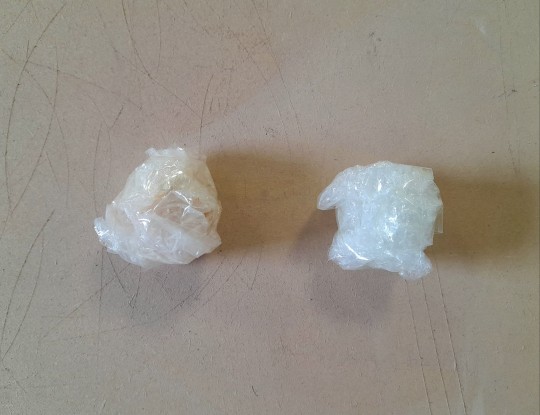
2 notes
·
View notes